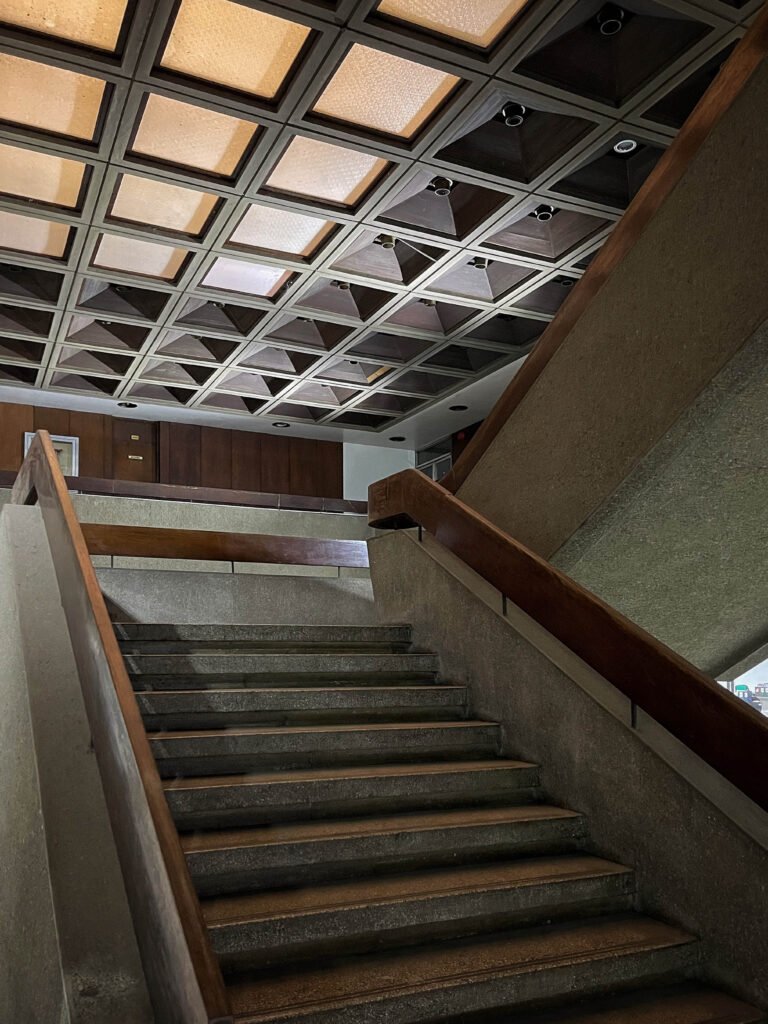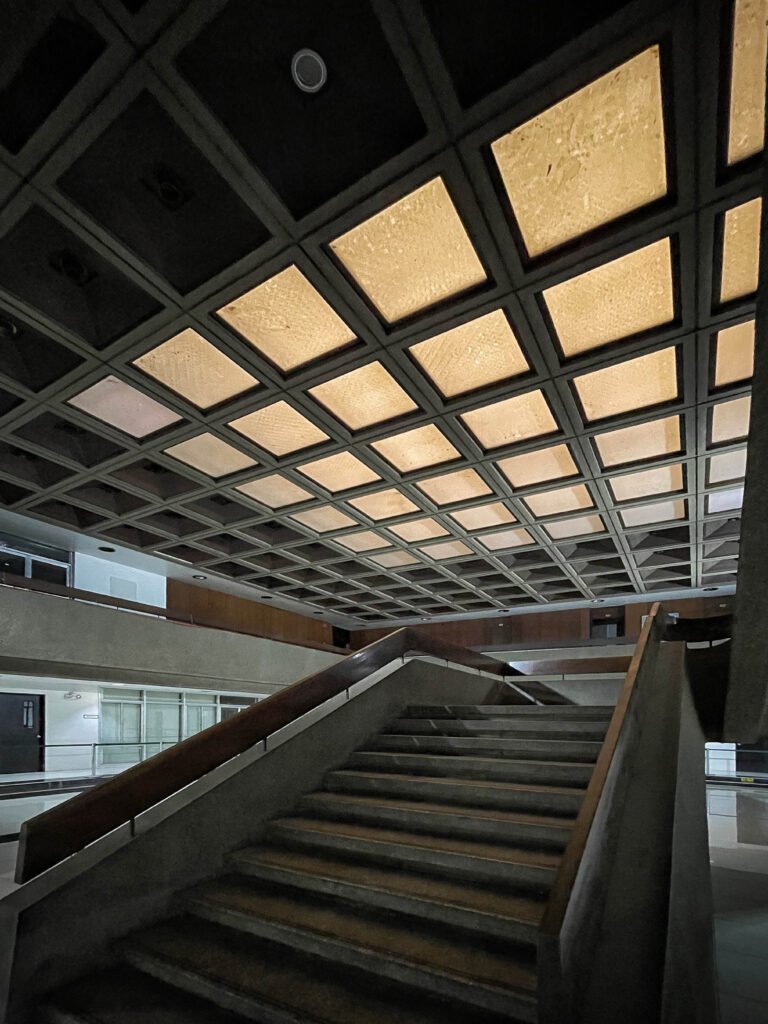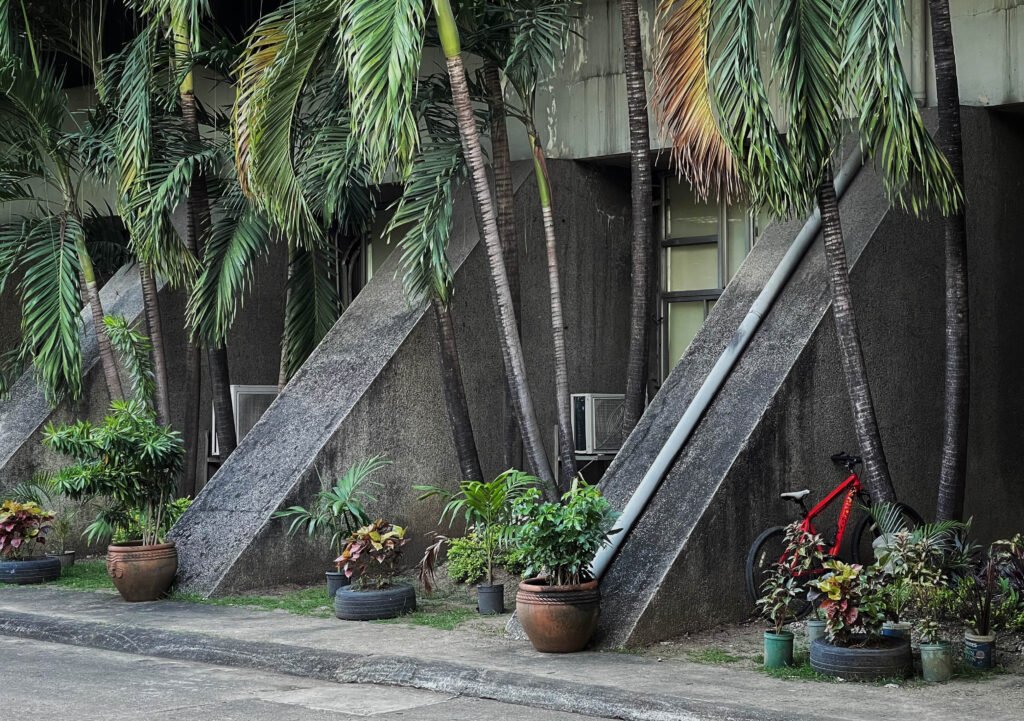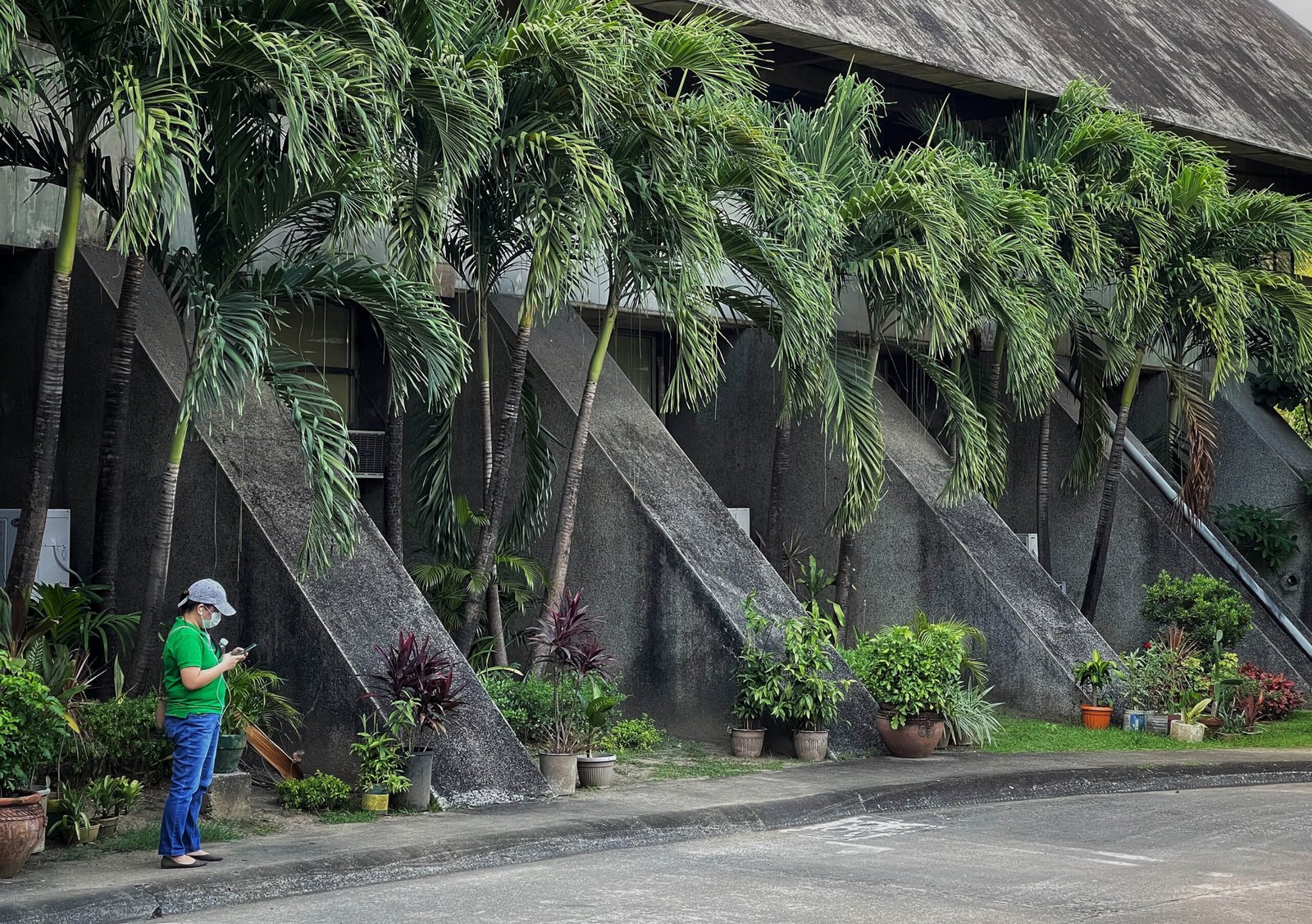Interview Patrick Kasingsing
Images Atom Araullo


Hello, Atom! Thanks for making time for Kanto. Our conversation will center on the dangers built heritage regularly faces as seen in the case of the Nutrition Center Building by National Artist for Architecture, Leandro Locsin, which you had the chance to visit. We welcome your thoughts as an admirer outside the craft of architecture and heritage conservation, but with an understanding of the importance of built heritage in helping cement our national identity.
First off, how much do you know about Leandro Locsin? Can you share with us the interactions you’ve had with his spaces?
Not much. Over the decades I’ve just come to admire his work, which I thought were quite elegant in their simplicity —unpretentious, utilitarian, and powerful. It was only later that I realized they were the work of a single person, and that’s how I came to know Leandro Locsin.
How would you describe your interactions with a Locsin-designed space? Where there design elements, finishes, or flourishes that resonated with you in particular?
I remember seeing the Cultural Center of the Philippines for the first time when I was a boy, and something about the outline of the building really struck me. This huge block of concrete seemed to be floating on air, like an angular alien spacecraft. I also loved the curved columns of the structure, which looked like giant waves made of cement. Inside, the high ceilings gave me the sense that I was visiting someplace important, almost sacred. I enjoyed touching the textured concrete because they always felt cool to the touch, while the twisting baluster reminded me of the playground slides we had in school.
I would come across the same design elements in Locsin’s other work, from the Parish of the Holy Sacrifice in UP Diliman to the National Arts Center in UP Los Baños. The clean lines, the striking silhouette, the dignified, no-nonsense elements of his architecture, are what appeal to me the most.


We have heard reports of the uncertain futures of several government buildings penned by Locsin: The Philippine Center for Population & Development, Nutrition Center, and SWADCAP DSWD buildings. Were you able to visit any of these buildings? What were your impressions of them?
I visited the National Nutrition Center last year for a story, not being aware that their office is also a Locsin. My first thoughts were: ang ganda naman ng building na ito, and proceeded to take photos with my cellphone. Locsin’s fingerprints were all over it, the clean lines, the big spaces, the lightness in an otherwise heavy and imposing structure. I especially liked the staircase in the middle of the building. Later, I found out that the government was planning to demolish the structure for the construction of a subway. That made me really sad. Sayang.
Locsin’s architecture was built during a period of experimentation and economy, a period marked by rampant volatility as the world inches itself away from the previous world war. While his skill and precocity in his chosen art are unparalleled and befitting his being named National Artist, his best works were done behind the shadow of a brutal regime and still elicit polarizing opinions because of this. Why should Locsin’s work be preserved?
I’m not sure if there’s any real dilemma surrounding the legacy of Locsin. To me, there’s no contradiction between condemning the sins of the Marcos regime and celebrating the work of the National Artist. I suspect part of it stems from the bad faith arguments that apologists tend to throw around in an attempt to rewrite the edifice complex of the former dictator and his wife. That Locsin was their preferred architect does not strike me as particularly problematic.

“I’m not sure if there’s any real dilemma surrounding the legacy of Locsin. To me, there’s no contradiction between condemning the sins of the Marcos regime and celebrating the work of the National Artist.”
In your opinion, in what ways can these Locsin structures be reused and integrated with current redevelopment plans that may forever alter or wipe the spaces from existence? What examples/best practices in the realm of adaptive reuse and heritage activation are worth emulating?
I think the basic questions are: how do we appreciate these structures? Are they treasures or just remnants of a bygone era? I know little about this topic, but I know that in other countries they go to great lengths to preserve heritage, imposing strict rules about what people can do to old structures and what can be built around them. I don’t think progress has ground to a halt in those nations because of this approach.
The choice between ‘development’ and heritage preservation is one that more and more rapidly-growing cities are facing with increasing frequency; can a balance be struck between the two?
Absolutely. For me, this is a false dilemma.
Locsin’s firm is letting the government and public, for whom the facilities were designed, decide the fate of these buildings. But one notes that in the Philippines (and elsewhere), there is a lot of public apprehension and uncertainty regarding built heritage; along with the wide age gap, examples of built heritage also often suffer from being cordoned off public life, either as a fragile thing or as a pariah that needs to be avoided for safety. What are ways we can educate the public and private sector about the importance of built heritage and which sector/s do you think should be at the forefront of this charge?
Let me hazard a guess here. I think there is a misconception that preserving built heritage is the domain of the rich and educated. And this is precisely because many of them are out of reach for everyday Filipinos. On one hand, it’s crucial to have an aggressive public information campaign educating people about why we should preserve these structures, going beyond the fact that they’re pretty things. If we go even deeper, why is preserving our collective memory, through these works of architecture, important? Because identity is important, and we are lost without it. But beyond the philosophical, we have to show people that these are their treasures, and that means sharing them with everyone and making them a part of public life (in a sustainable way of course). Government has to be at the forefront because it will involve public policy and resources. Advocates, scholars, volunteers, private donors, and the like must also be part of the effort. •

